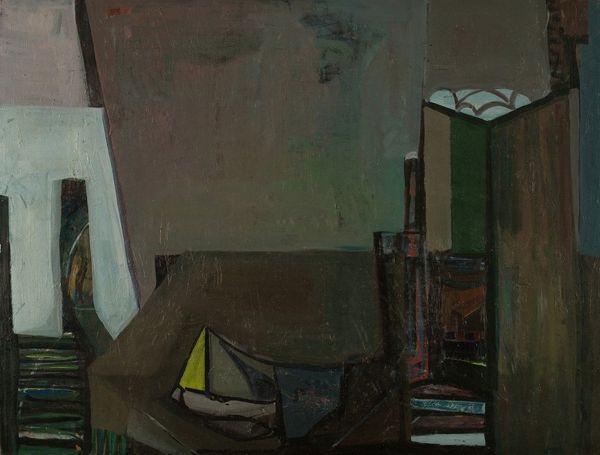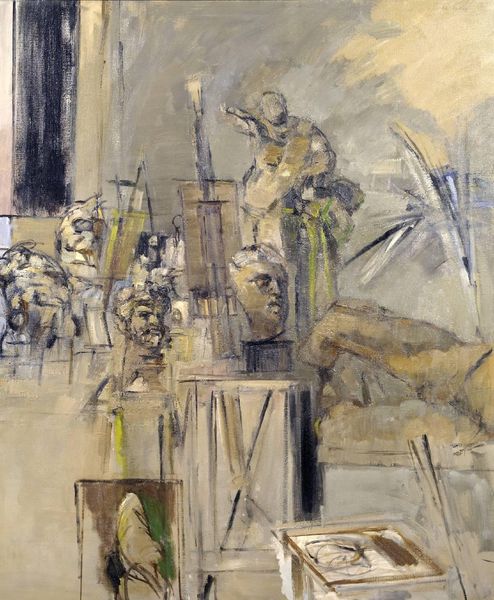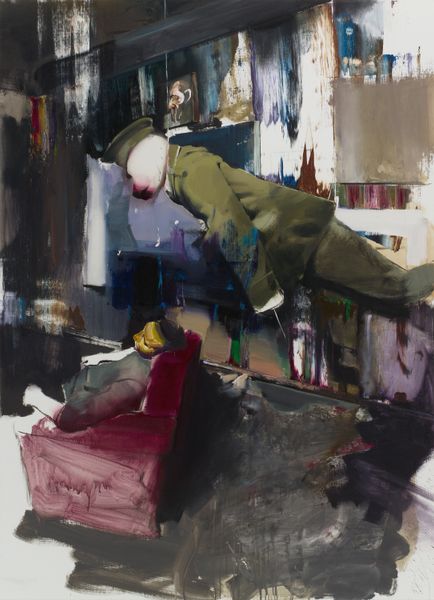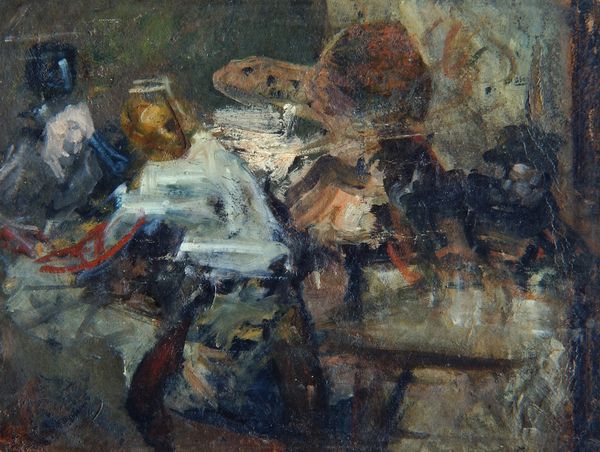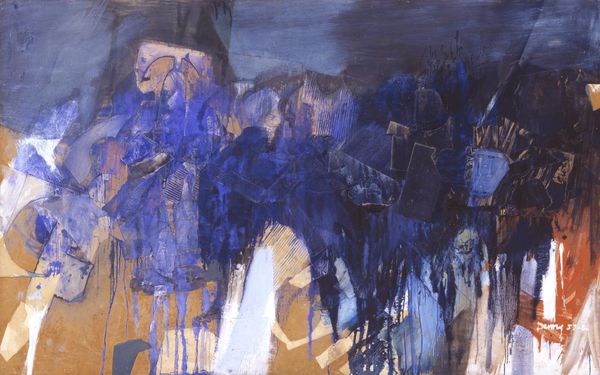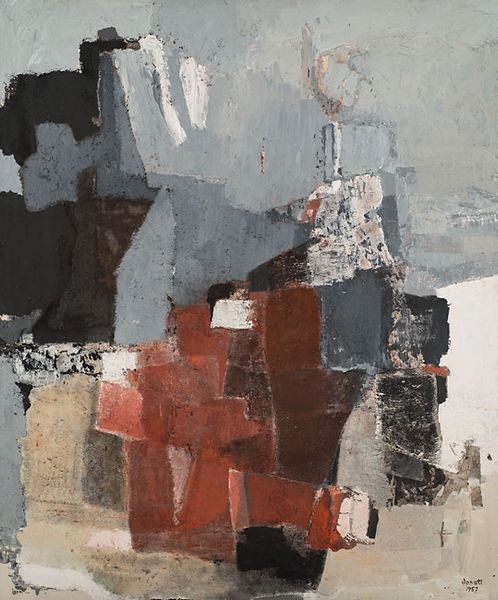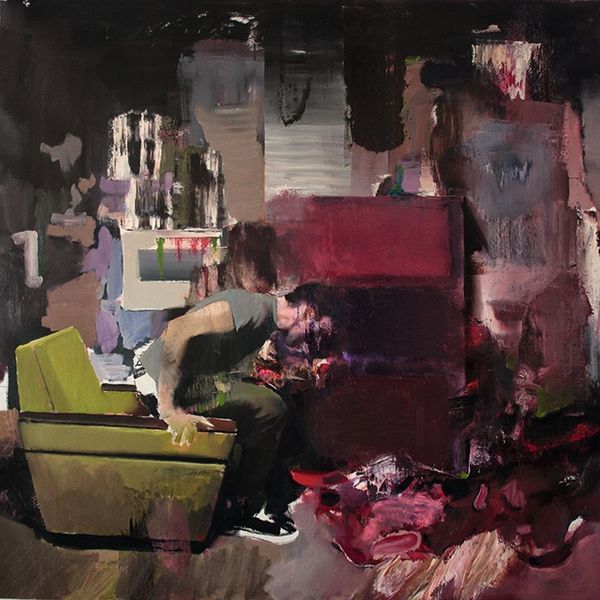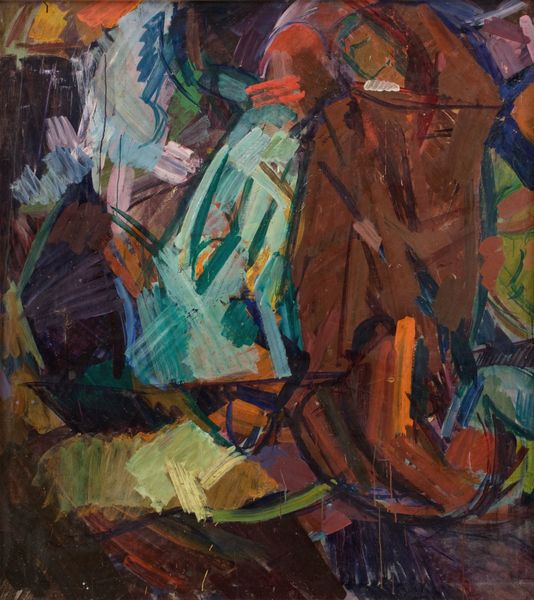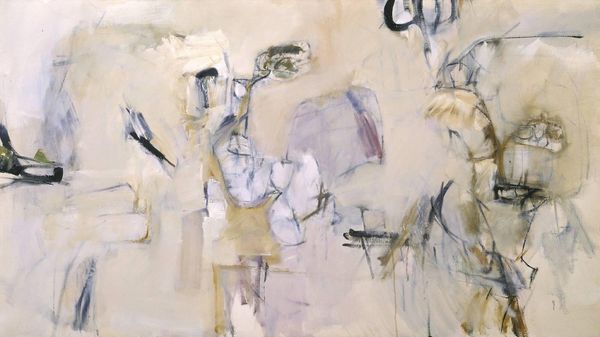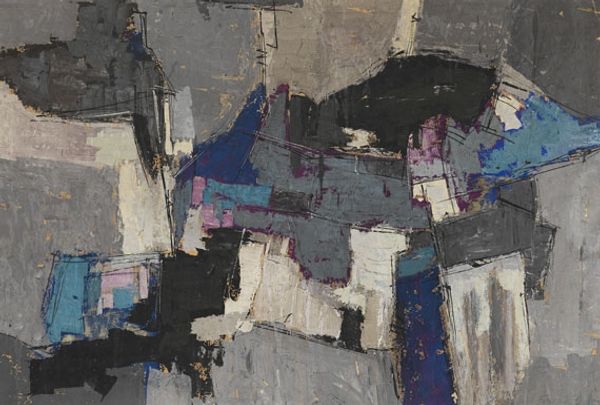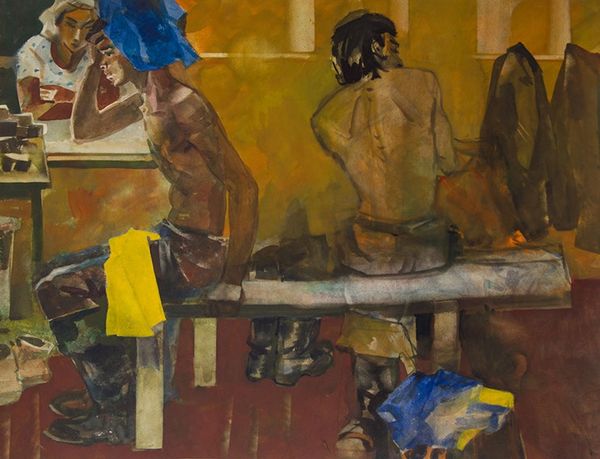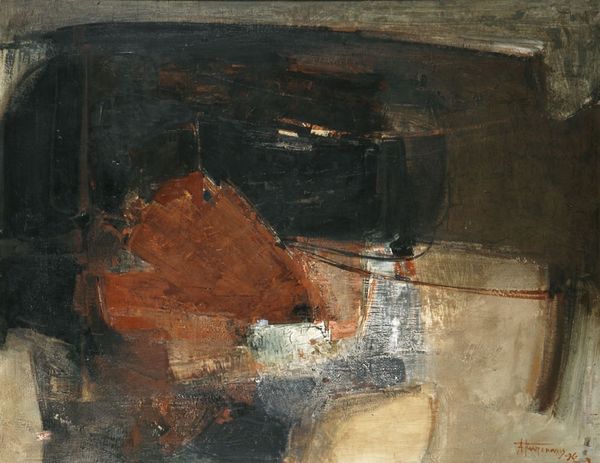
painting, oil-paint
#
portrait
#
abstract-expressionism
#
abstract expressionism
#
painting
#
oil-paint
#
figuration
#
abstract
#
oil painting
#
painterly
#
abstraction
Copyright: Public Domain: Artvee
Editor: Here we have "Far og barn," or "Father and Child," painted in 1942 by Jakob Weidemann, rendered with oil on canvas. The tones are quite somber, a dense layering of blues and greys that feels very heavy. It's difficult to discern the figures clearly, which adds to this sense of obscured emotions. What do you see as the driving forces in this piece? Curator: The texture, first and foremost. Look at the way Weidemann has built up the paint, creating a physical surface that’s almost sculptural. This wasn’t just about representing figures; it was about the act of making itself. We need to consider what materials were available to him, and what modes of expression were possible during that time. This thick application and abstraction could speak to the constraints and the creative rebellion against those limits. Editor: So you're suggesting that the *how* is just as important as the *what*? The rough materiality mirrors the socio-political environment? Curator: Precisely! And the limited color palette - do you see how muted it is? Think about resource scarcity. What colours were attainable or prioritized then? Also, notice how the figures seem to be emerging from this haze – barely formed, almost ghosts. That speaks volumes about the anxieties around identity and existence during wartime. The materiality actively shapes the message. Editor: I see what you mean. It really challenges the conventional portrait where likeness and representation are the goals. This feels more about exploring those base materials as conduits of lived experience. Curator: Absolutely! Weidemann uses these accessible elements to voice anxieties and resilience that defined that period, and offers insights to a broad audience. Editor: That's a really compelling point. Thinking about it in those terms, the painting becomes less about just a father and child, and more about survival and artistic freedom amid restrictions. Curator: Indeed, analyzing materials and their contextual relationship adds layers of appreciation beyond a formal art historical approach.
Comments
No comments
Be the first to comment and join the conversation on the ultimate creative platform.
